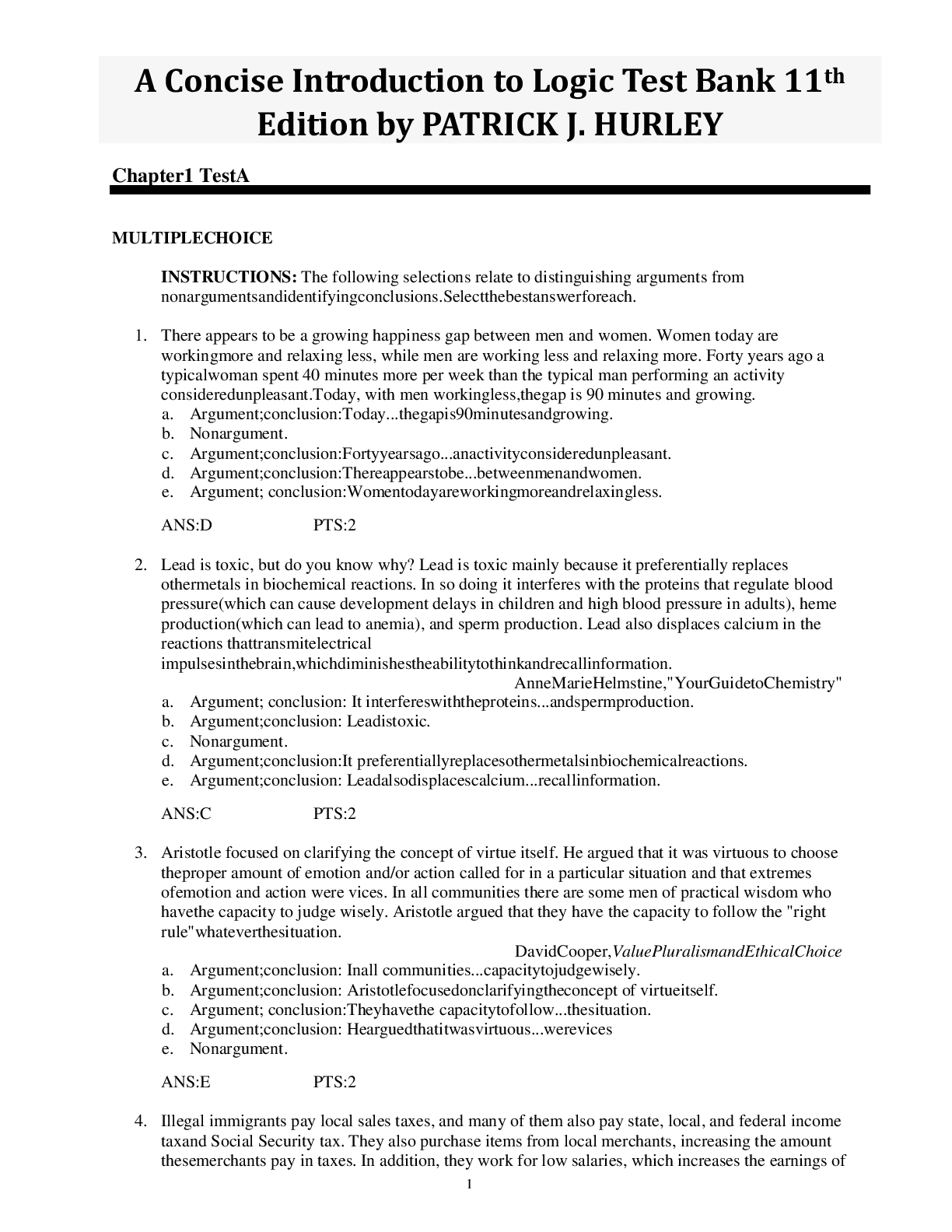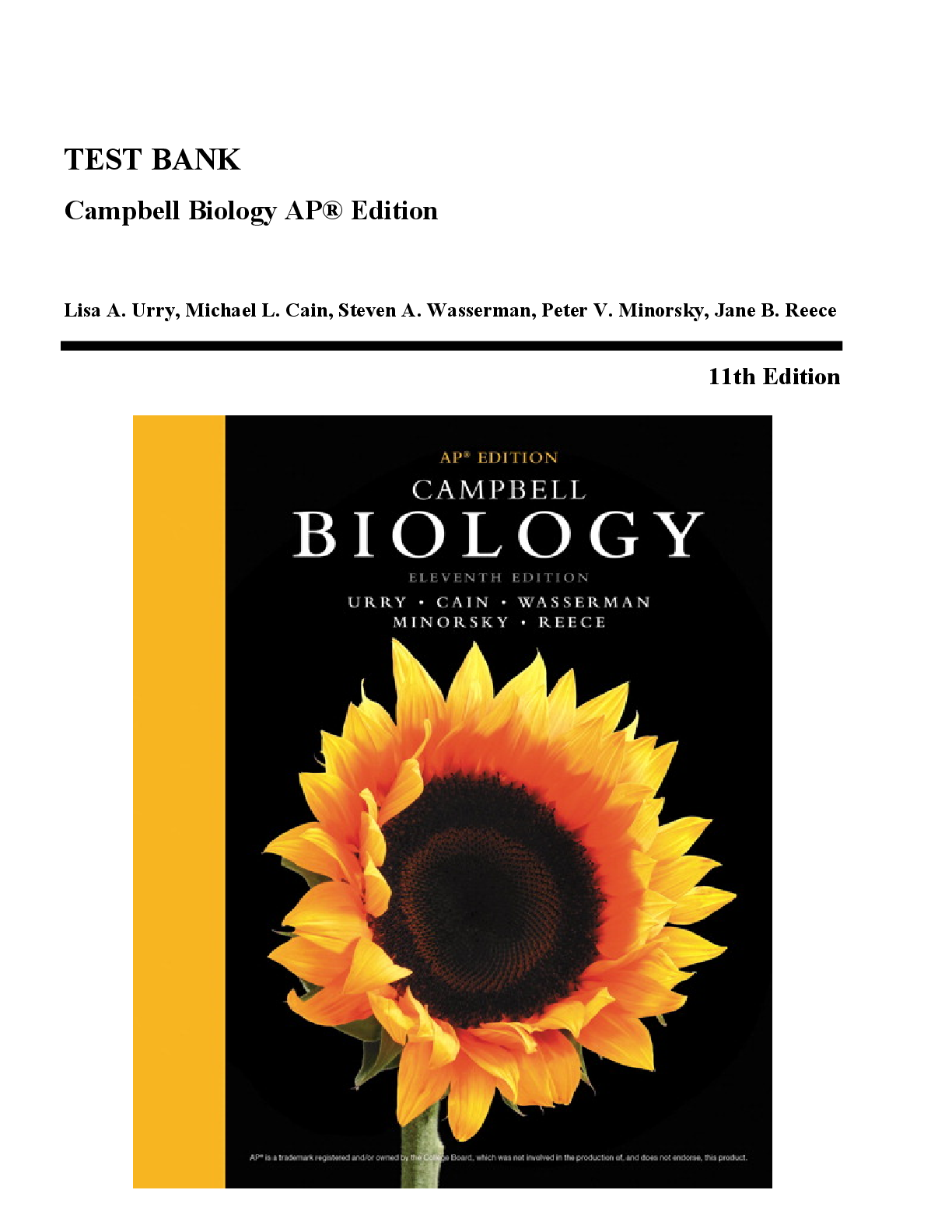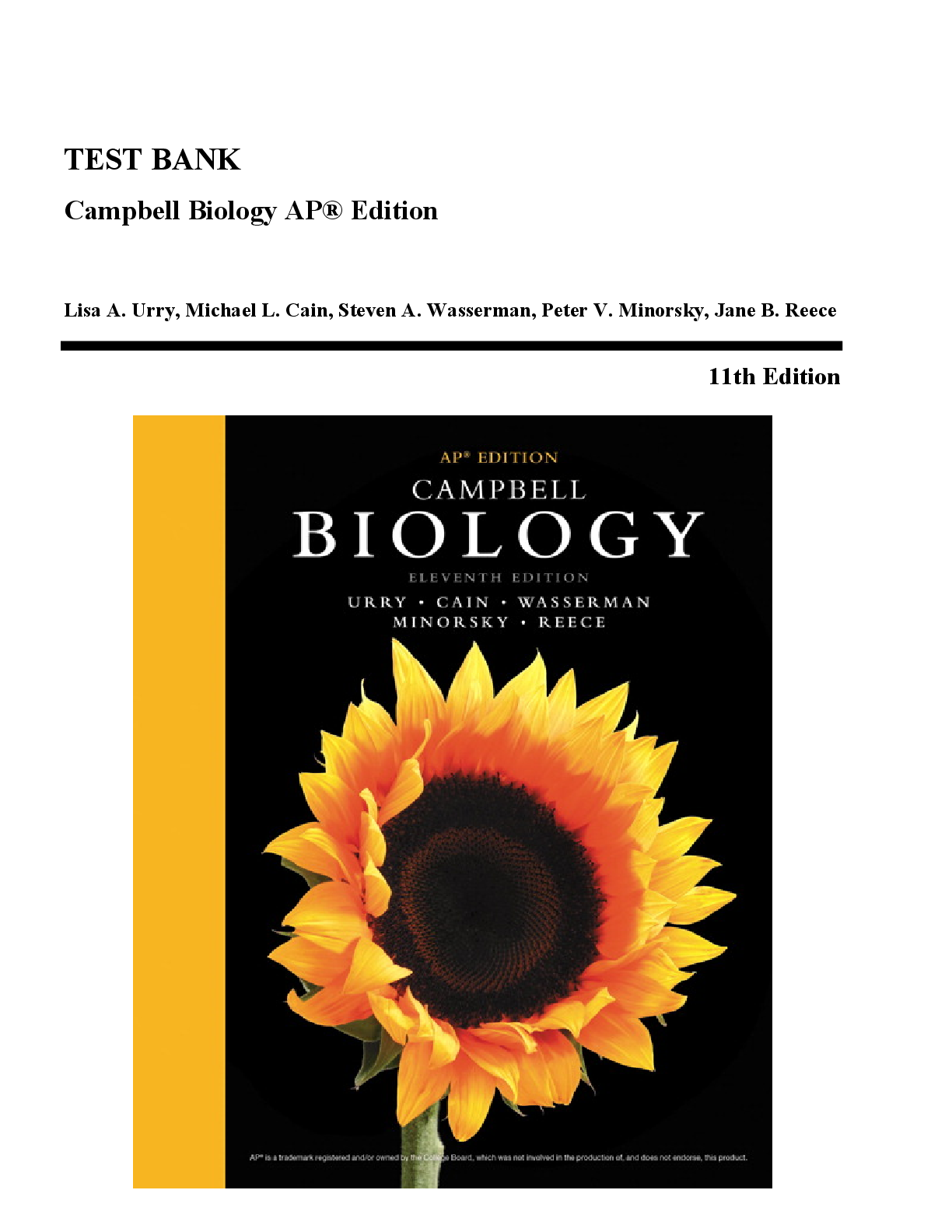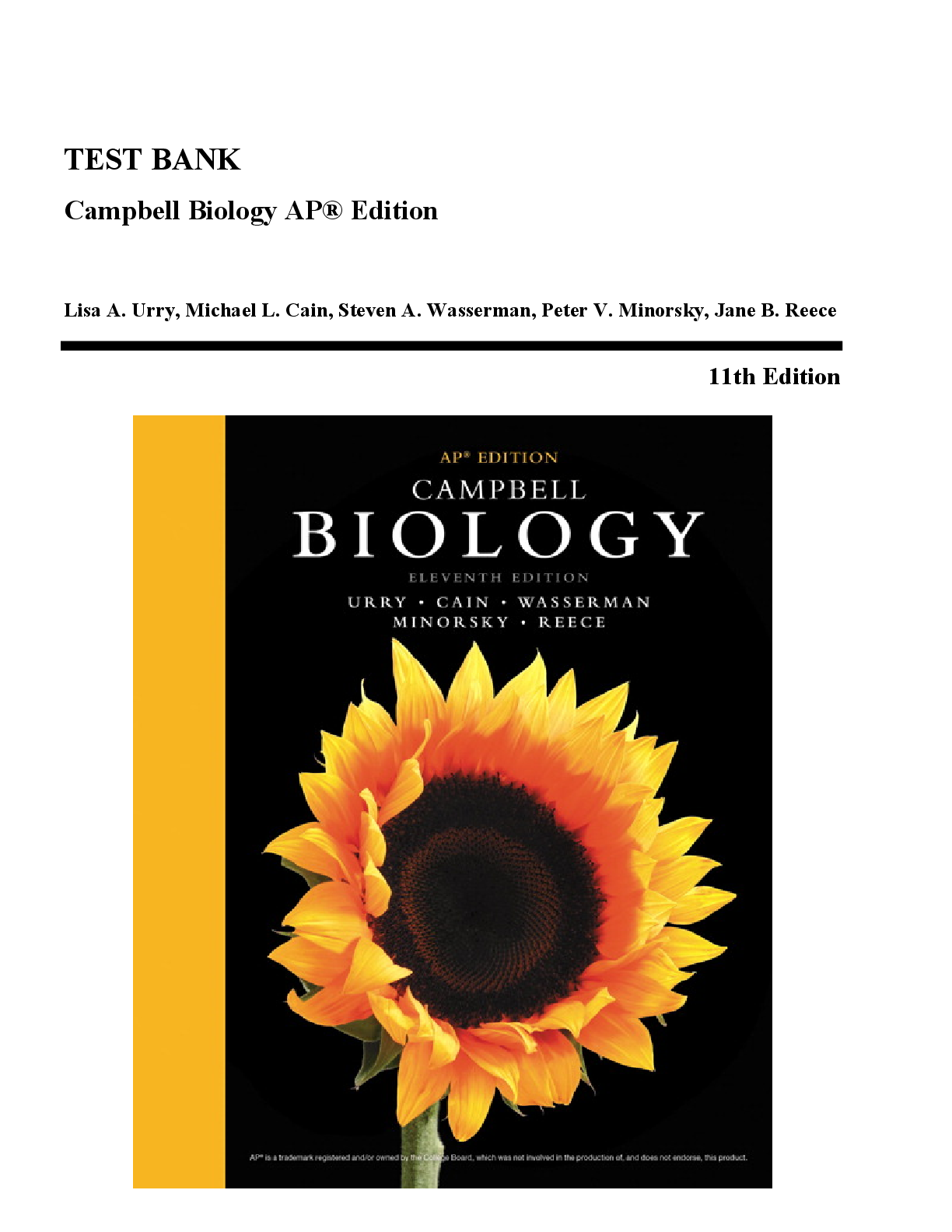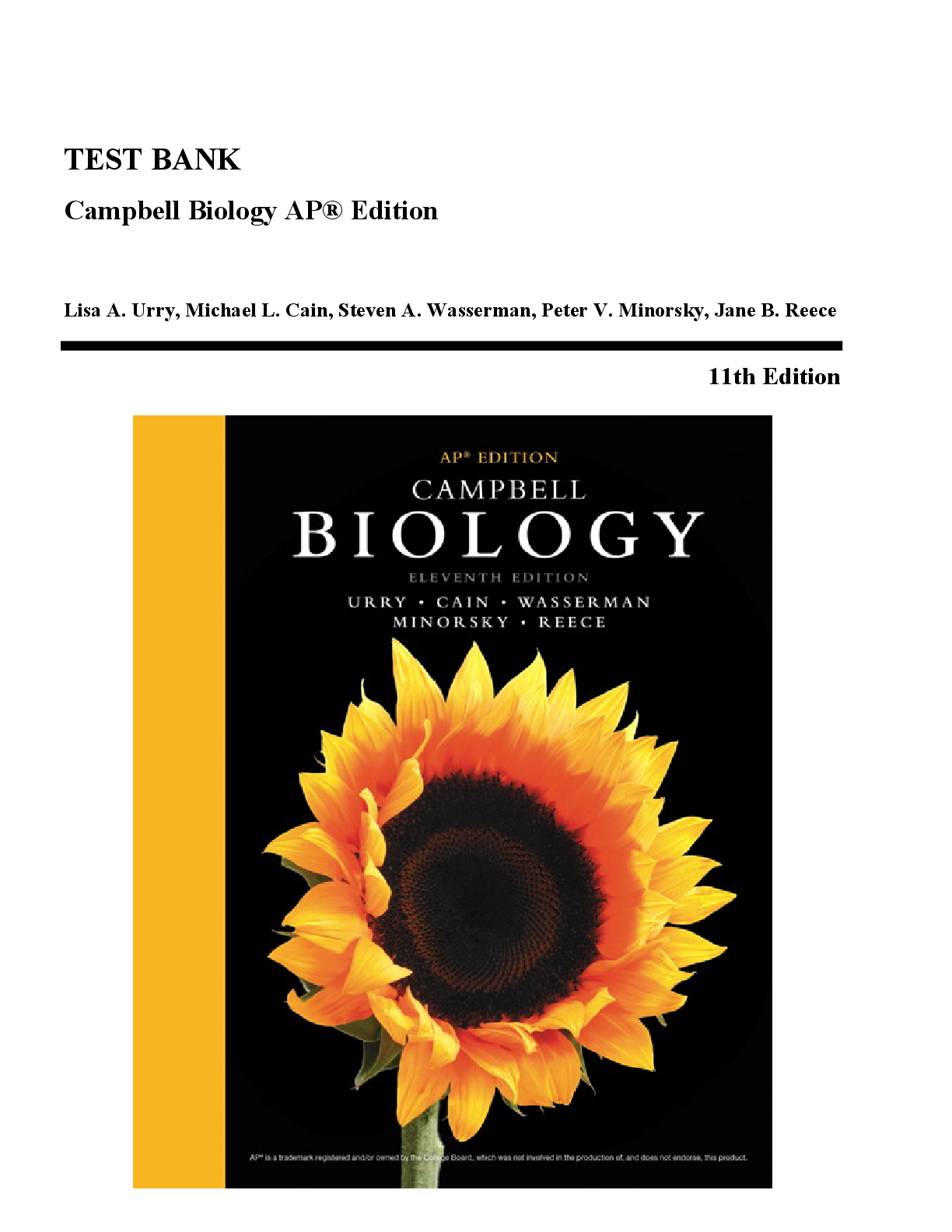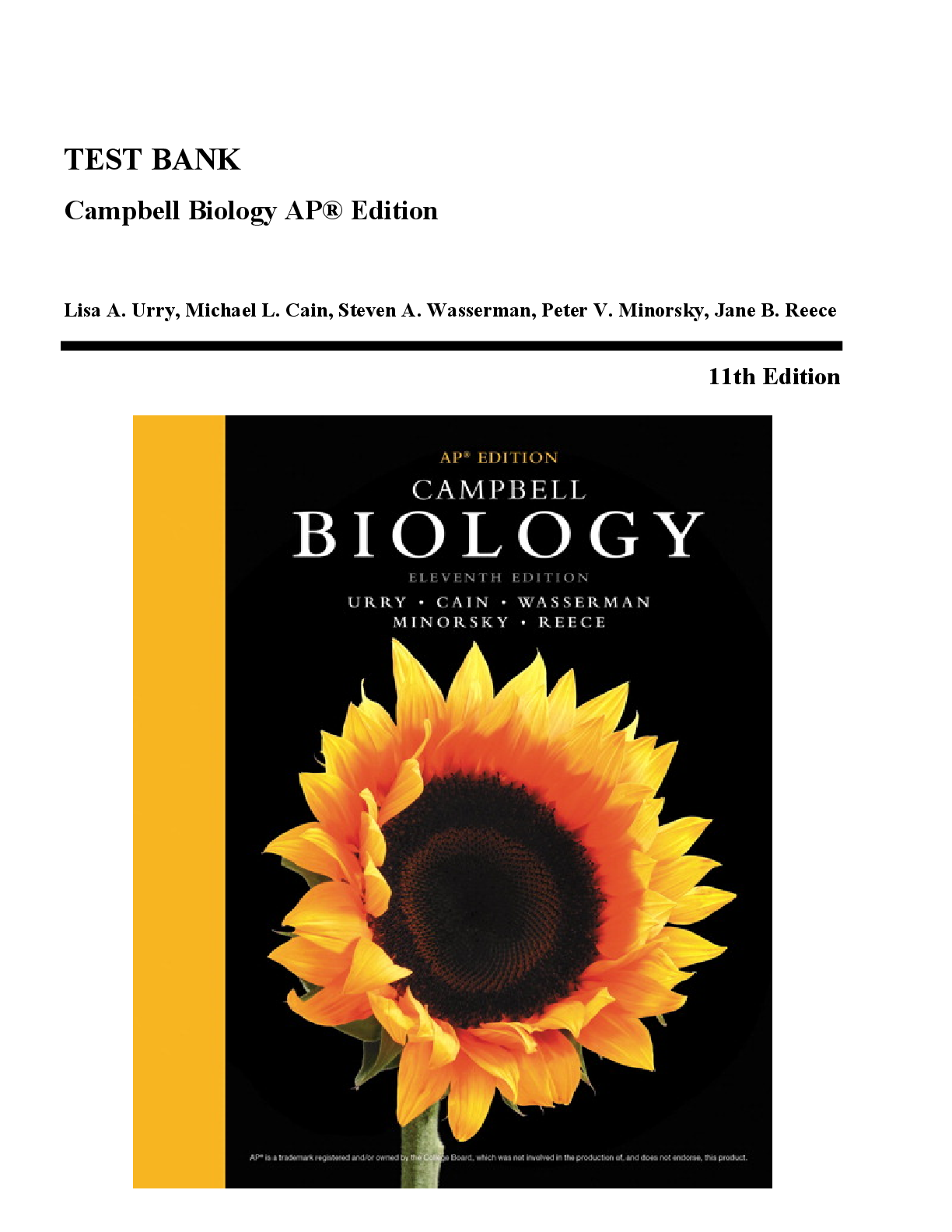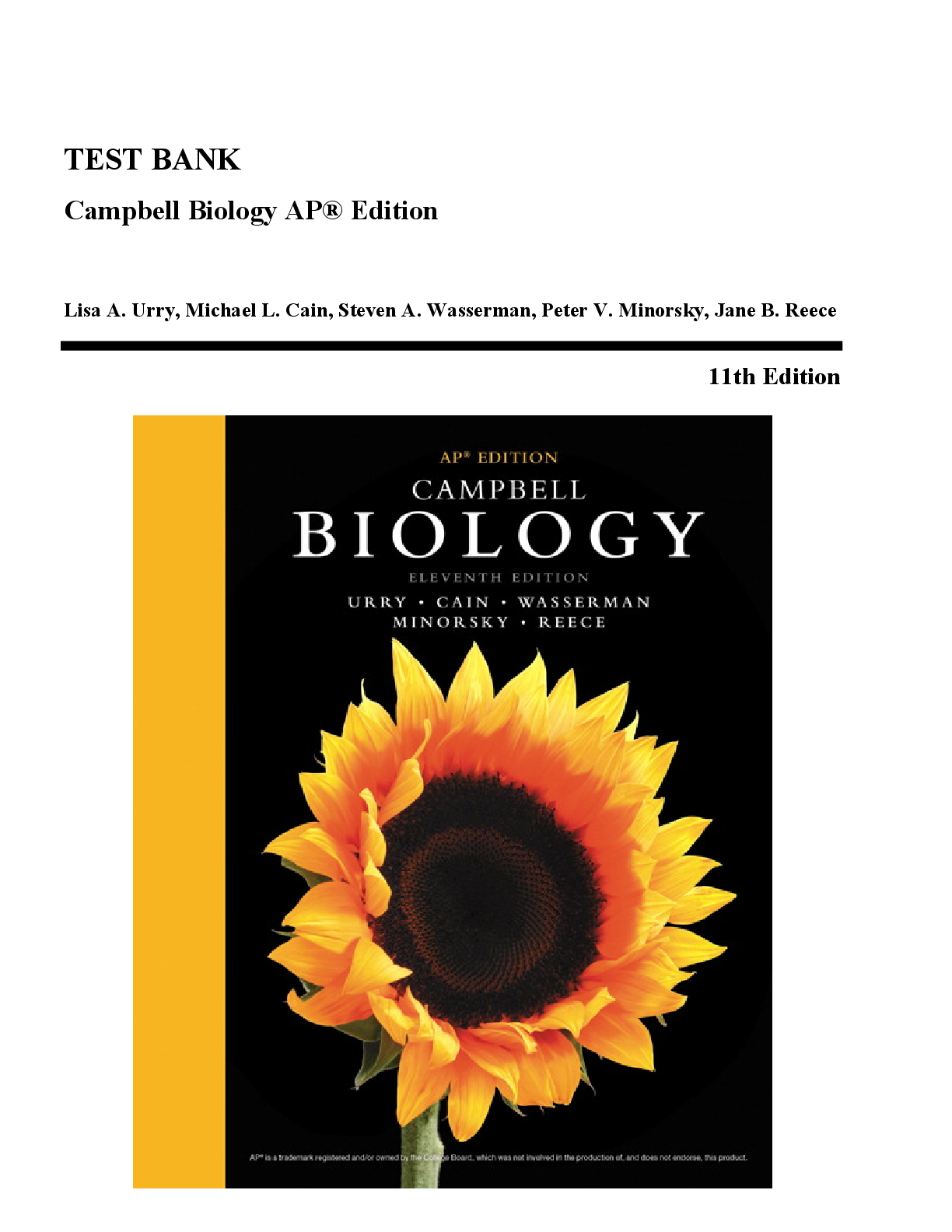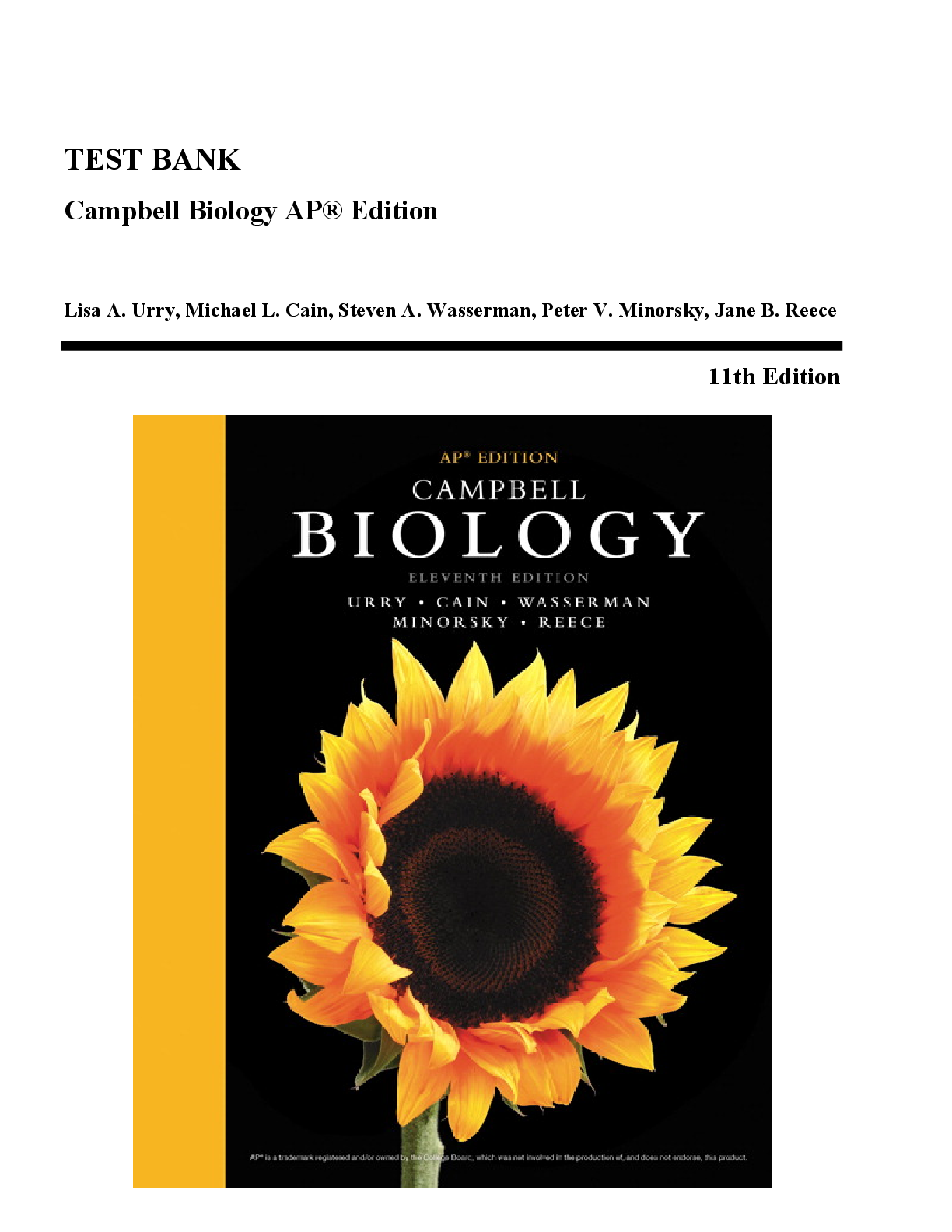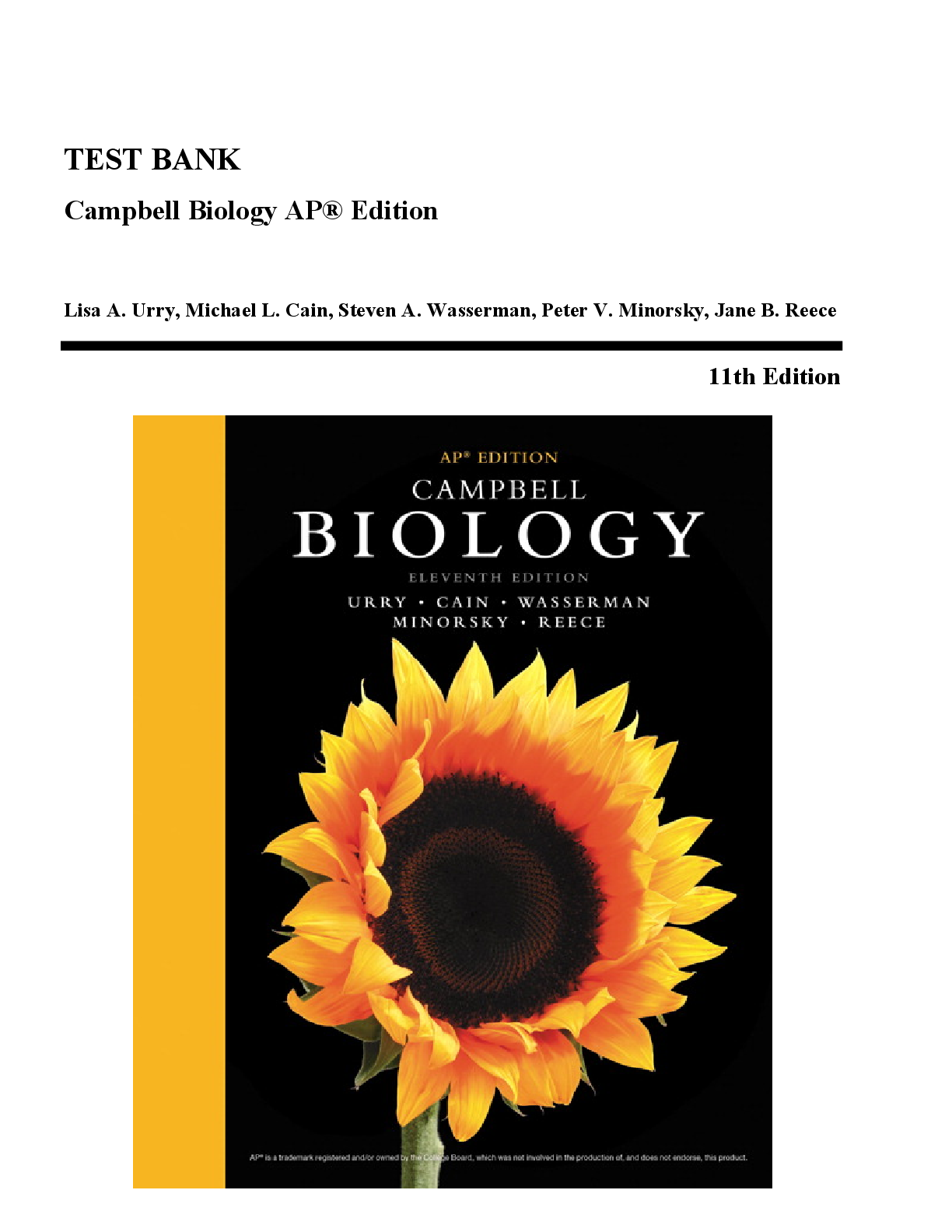Biology > TEST BANKS > Campbell Biology Test Bank 11TH Edition (Urry) (All)
Campbell Biology Test Bank 11TH Edition (Urry)
Document Content and Description Below
Campbell Biology Test Bank 11TH Edition (Urry) Campbell Biology Test Bank 11TH Edition (Urry) Cells are ________. A) only found in pairs, because single cells cannot exist independently B) limited in... size to 200 and 500 micrometers in diameter C) characteristic of eukaryotic but not prokaryotic organisms D) characteristic of prokaryotic and eukaryotic organisms Answer: D Bloom's Taxonomy: Knowledge/Comprehension Section: 1.1 2) In comparison to eukaryotes, prokaryotes ________. A) are more structurally complex B) are larger C) are smaller D) do not have membranes Answer: C Bloom's Taxonomy: Knowledge/Comprehension Section: 1.1 3) Which of the following types of cells utilize deoxyribonucleic acid (DNA) as their genetic material but do not have their DNA encased within a nuclear envelope? A) animal B) plant C) archaean D) fungi Answer: C Bloom's Taxonomy: Application/Analysis Section: 1.1 4) To understand the chemical basis of inheritance, we must understand the molecular structure of DNA. This is an example of the application of which concept to the study of biology? A) evolution B) emergent properties C) reductionism D) feedback regulation Answer: C Bloom's Taxonomy: Application/Analysis Section: 1.1 2 5) A localized group of organisms that belong to the same species is called a ________. A) community B) population C) ecosystem D) family Answer: B Bloom's Taxonomy: Knowledge/Comprehension Section: 1.1 6) Which of the following statements is true regarding the complexity of biological systems? A) An understanding of the interactions between different components within a living system is an approach towards understanding reductionism. B) Knowing the function of a component of a living system can provide insights into the structure and organization of the living system. C) Understanding the chemical structure of DNA reveals how it directs the functioning of a living cell. D) An ecosystem displays complex properties of the biotic component only. Answer: B Bloom's Taxonomy: Application/Analysis Section: 1.1 7) Which of the following order is correct in terms of the hierarchy of the organization? A) Ecosystem → Biosphere → Population → Community → Organism B) Biosphere → Ecosystem → Population → Community → Organism C) Ecosystem → Community → Biosphere → Population → Organism D) Biosphere → Ecosystem →Community → Population → Organism Answer: D Bloom's Taxonomy: Application/Analysis Section: 1.1 8) When your body temperature rises on a hot day, the neural and hormonal mechanisms activate sweating. Evaporation of sweat leads to cooling of the body surface. This is an example of ________. A) positive feedback regulation B) negative feedback regulation C) chemical cycling D) emergent properties Answer: B Bloom's Taxonomy: Application/Analysis Section: 1.1 3 9) Characters are transmitted from parents to offspring. ________ are the units of inheritance. A) Genes B) Proteins C) RNA D) DNA Answer: A Bloom's Taxonomy: Knowledge/Comprehension Section: 1.1 10) As letters are to English language, ________ is/are to genetic information. A) proteins B) nucleotides C) DNA double helix D) A and B Answer: B Bloom's Taxonomy: Knowledge/Comprehension Section: 1.1 11) The process by which the information in a gene directs the synthesis of a protein is called ________. A) gene expression B) replication C) post translation modification D) cloning Answer: A Bloom's Taxonomy: Application/Analysis Section: 1.2 12) Which of the following statements is true? A) mRNA is the only type of RNA found in the living system B) All forms of life employ the same genetic code C) A typical human liver cell has one set of chromosomes D) Organisms interact but do not affect their environment Answer: B Bloom's Taxonomy: Knowledge/Comprehension Section: 1.2 13) Plants convert ________. A) chemical energy to mechanical energy. B) sunlight to mechanical energy. C) sunlight to chemical energy. D) mechanical energy to chemical energy. Answer: C Bloom's Taxonomy: Knowledge/Comprehension Section: 1.2 4 14) Which of these provides evidence of the common ancestry of all life? A) near universality of the genetic code B) structure of the nucleus C) structure of cilia D) structure of chloroplasts Answer: A Bloom's Taxonomy: Application/Analysis Section: 1.2 [Show More]
Last updated: 5 months ago
Preview 1 out of 1200 pages
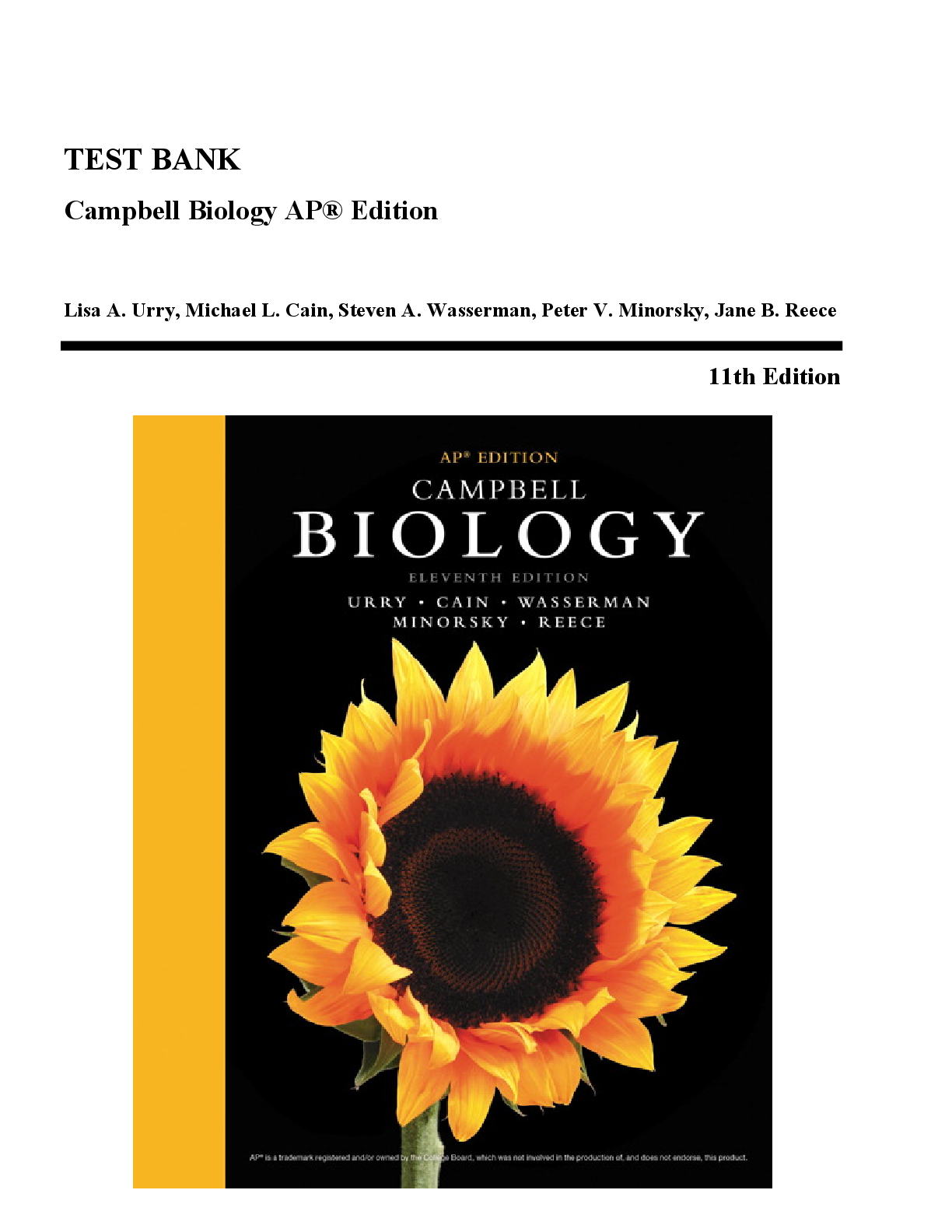
Buy this document to get the full access instantly
Instant Download Access after purchase
Buy NowInstant download
We Accept:

Reviews( 0 )
$15.00
Can't find what you want? Try our AI powered Search
Document information
Connected school, study & course
About the document
Uploaded On
Feb 16, 2025
Number of pages
1200
Written in
Additional information
This document has been written for:
Uploaded
Feb 16, 2025
Downloads
0
Views
30

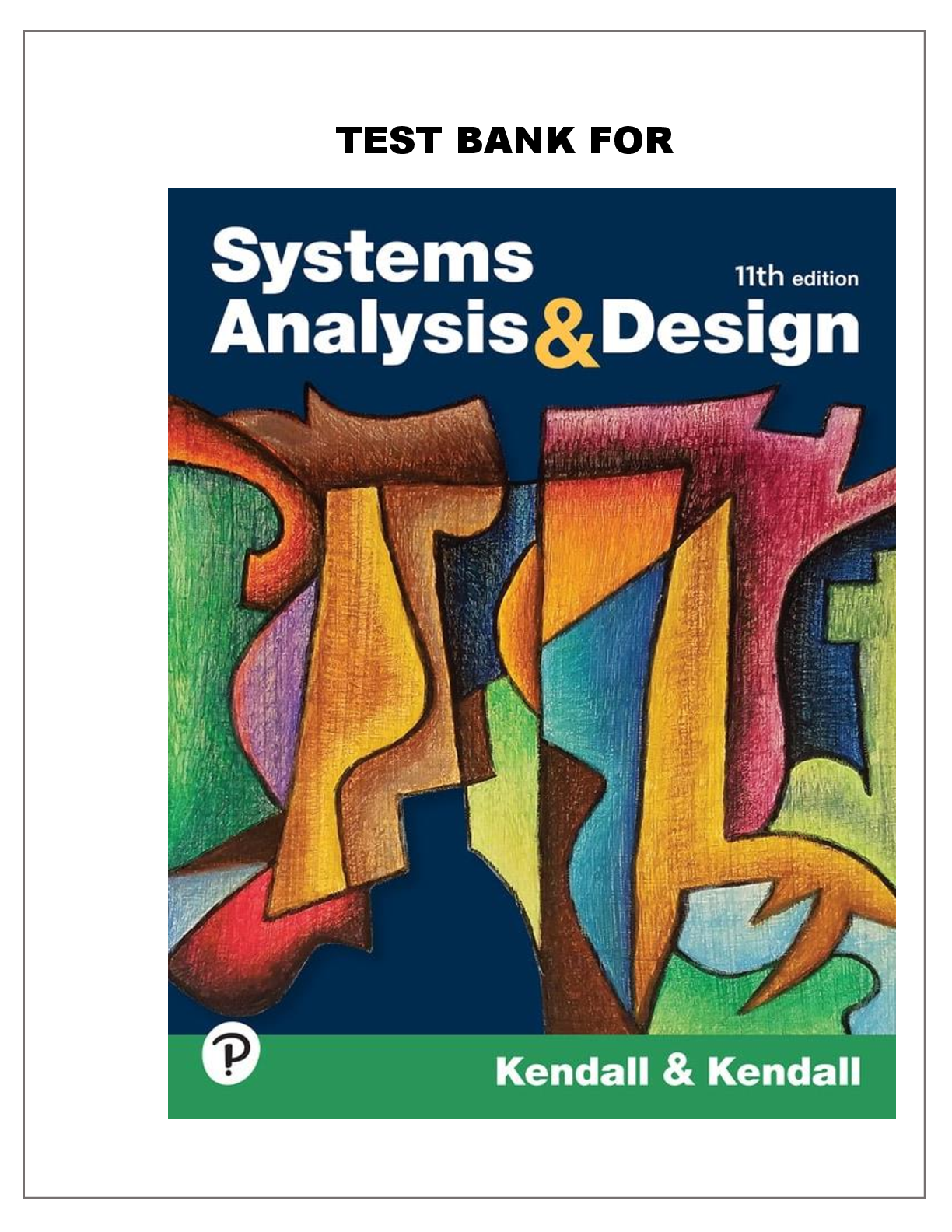
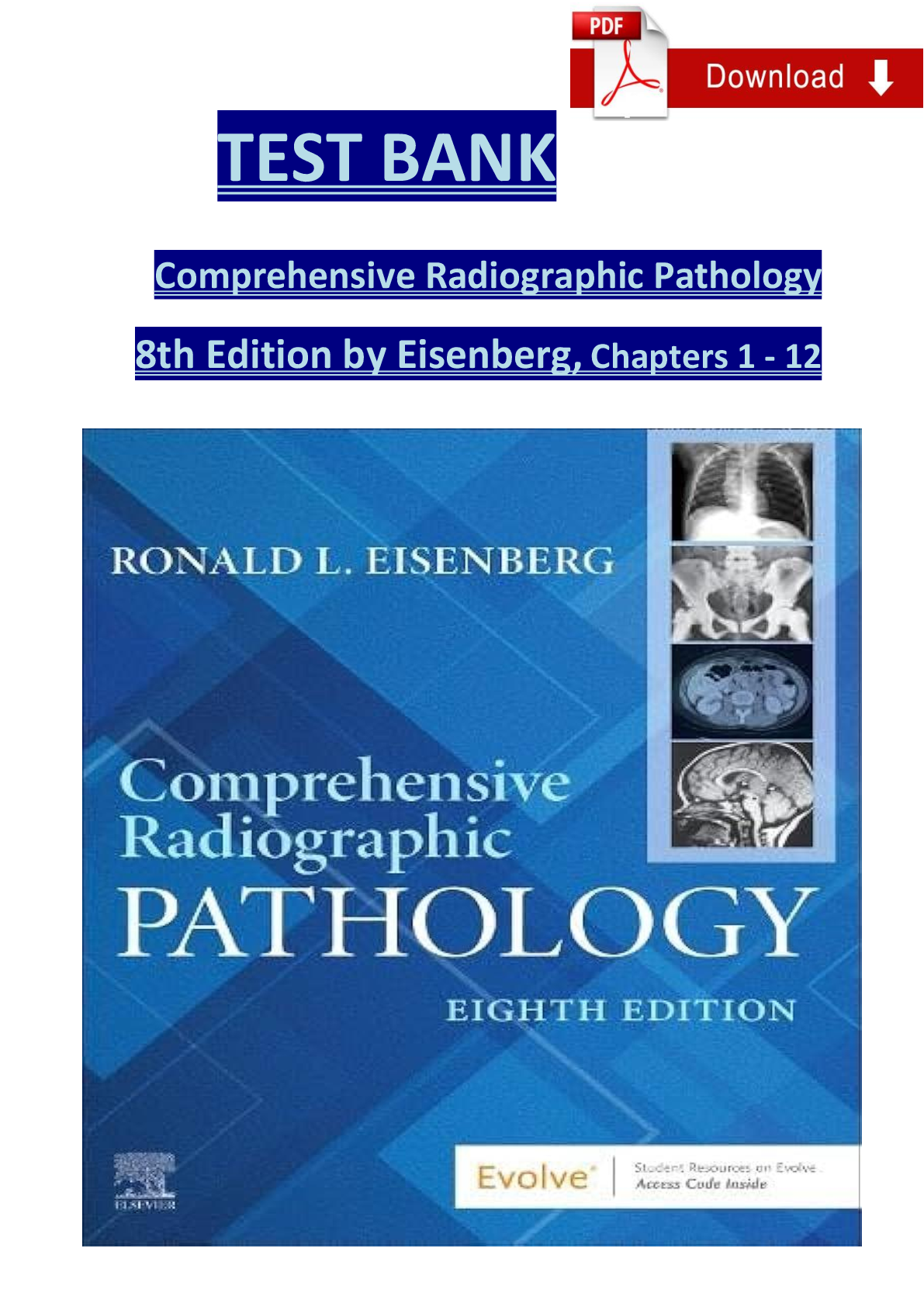
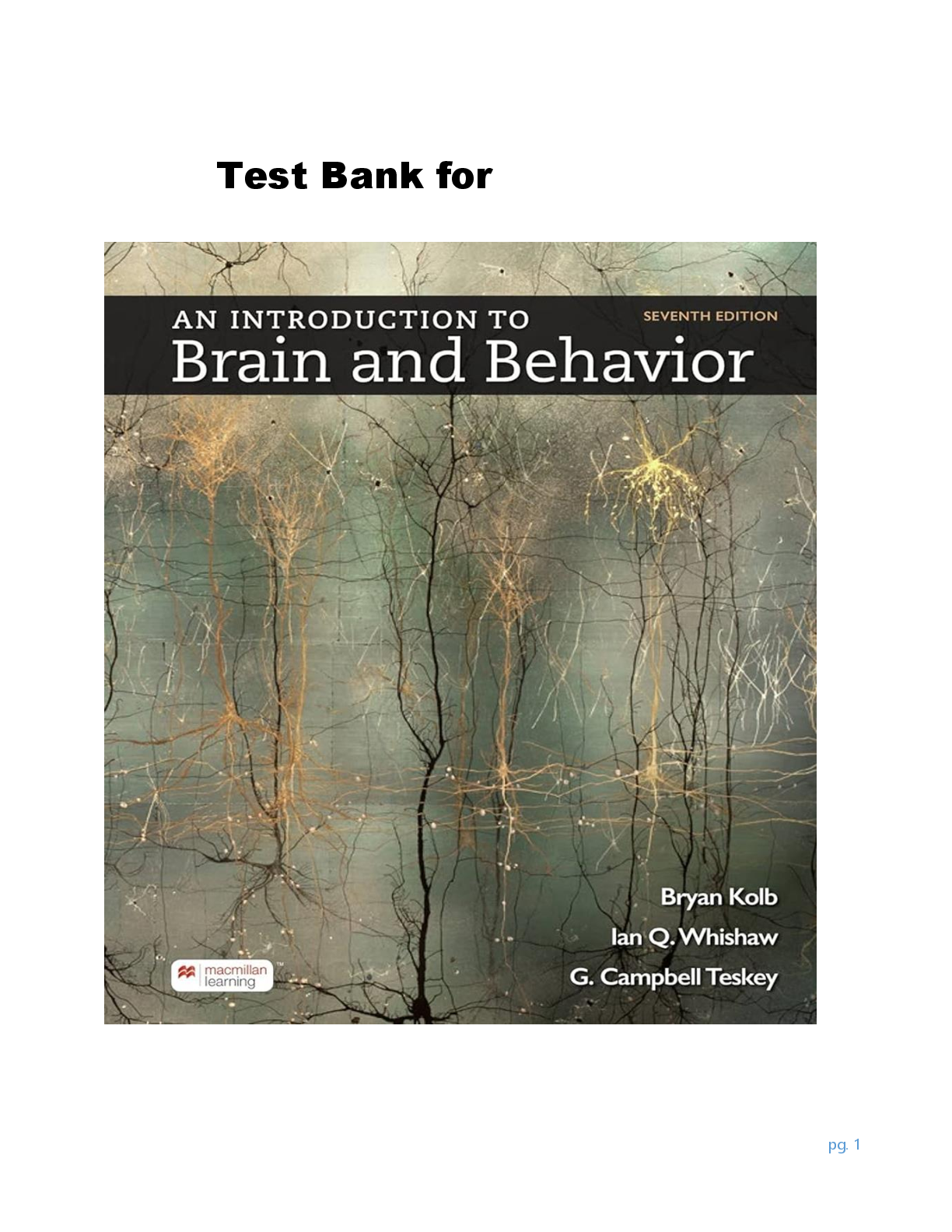
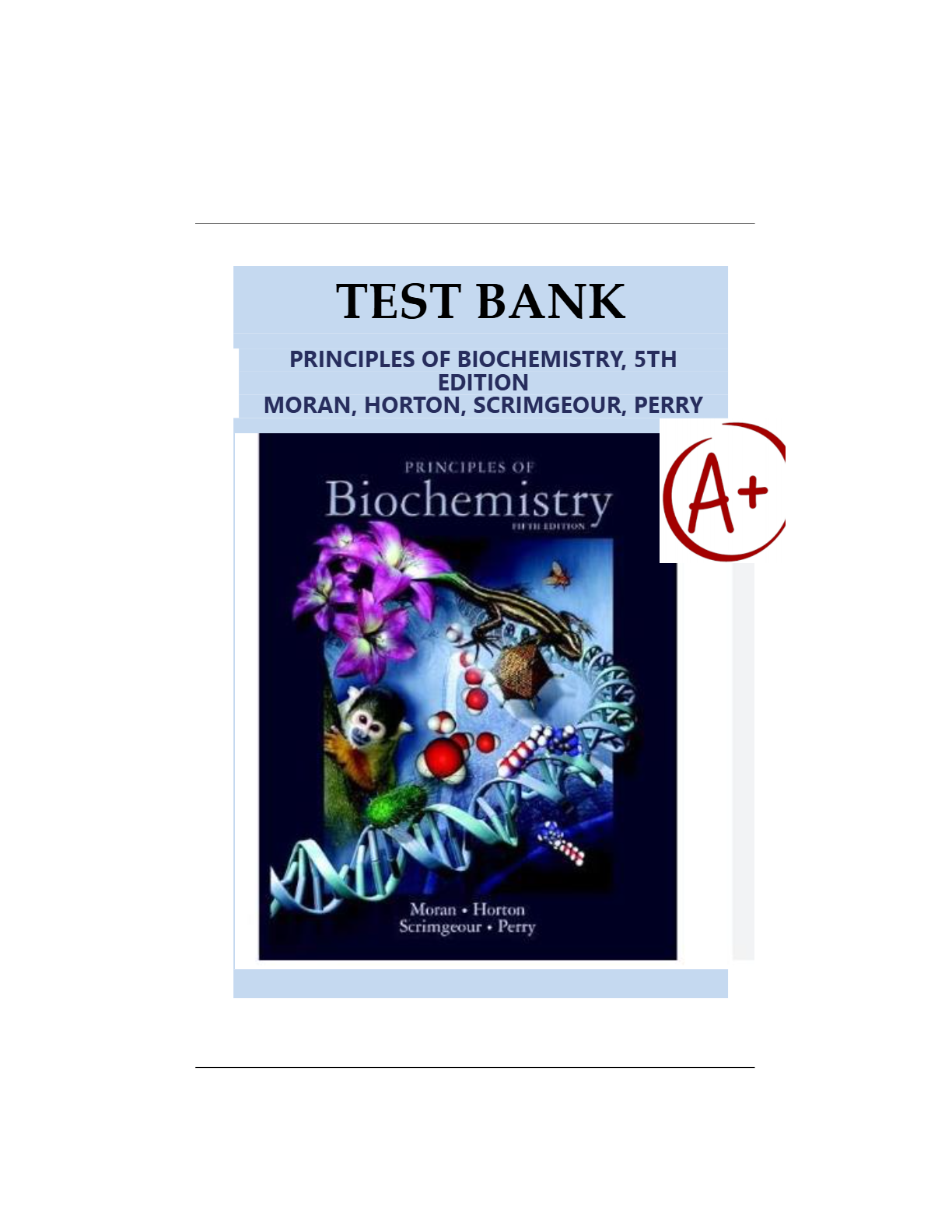
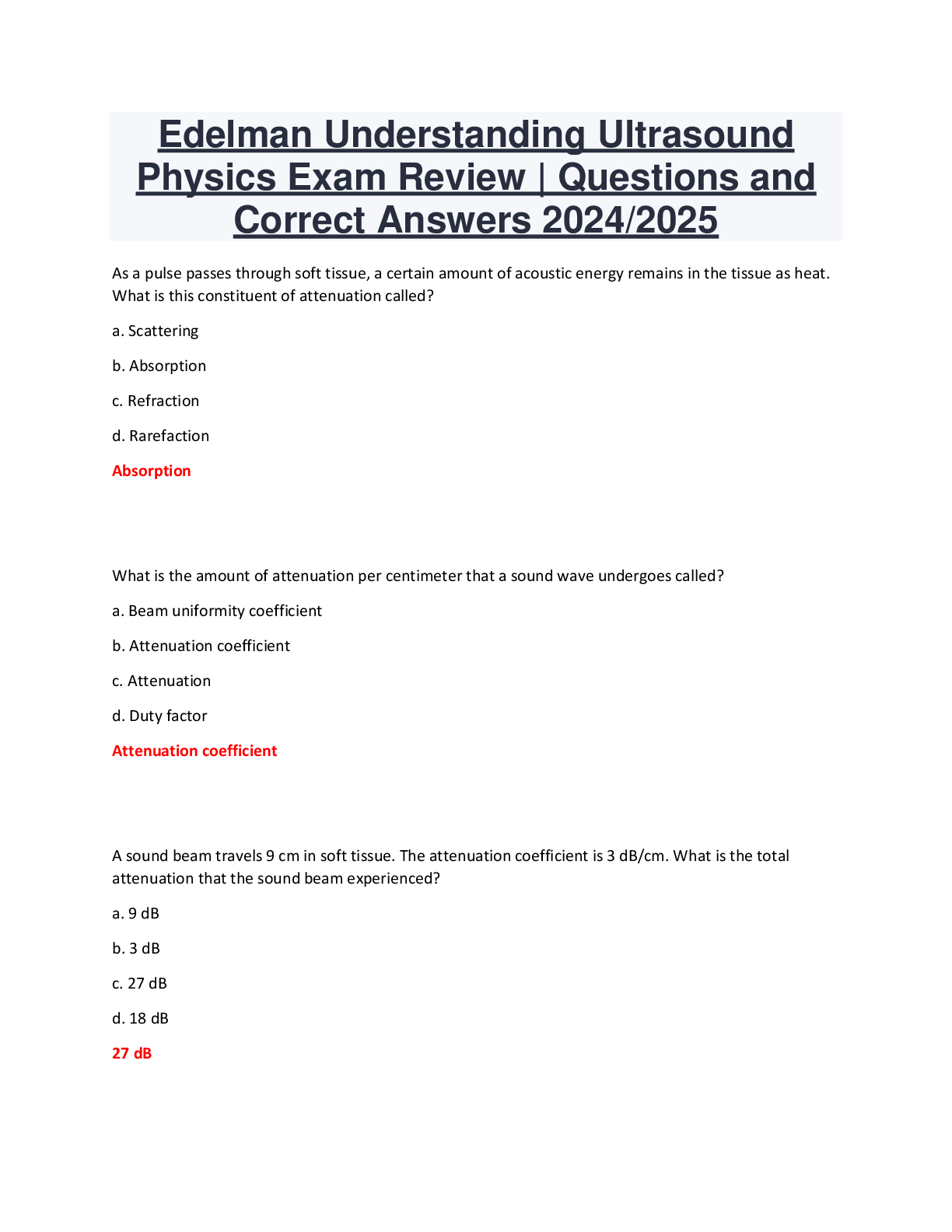
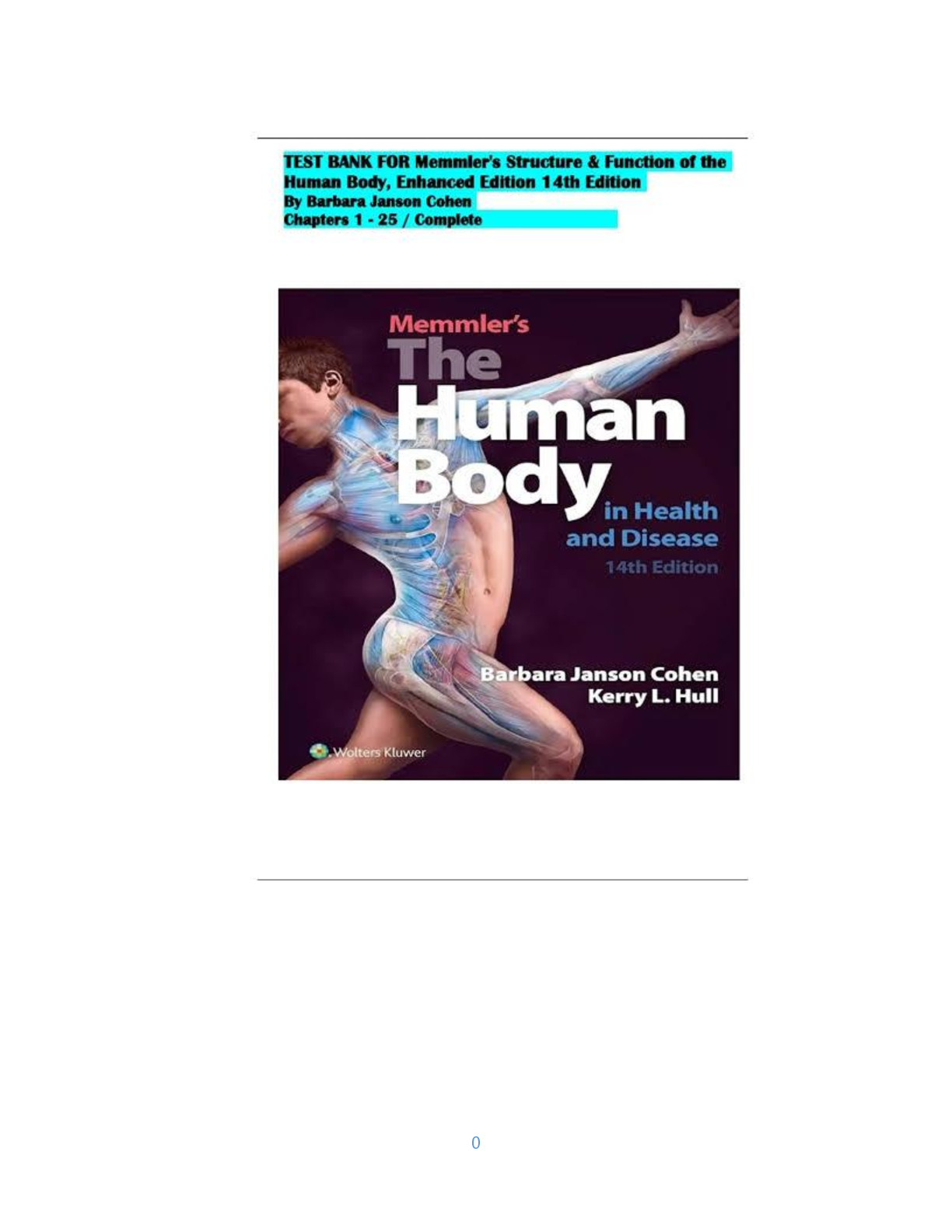
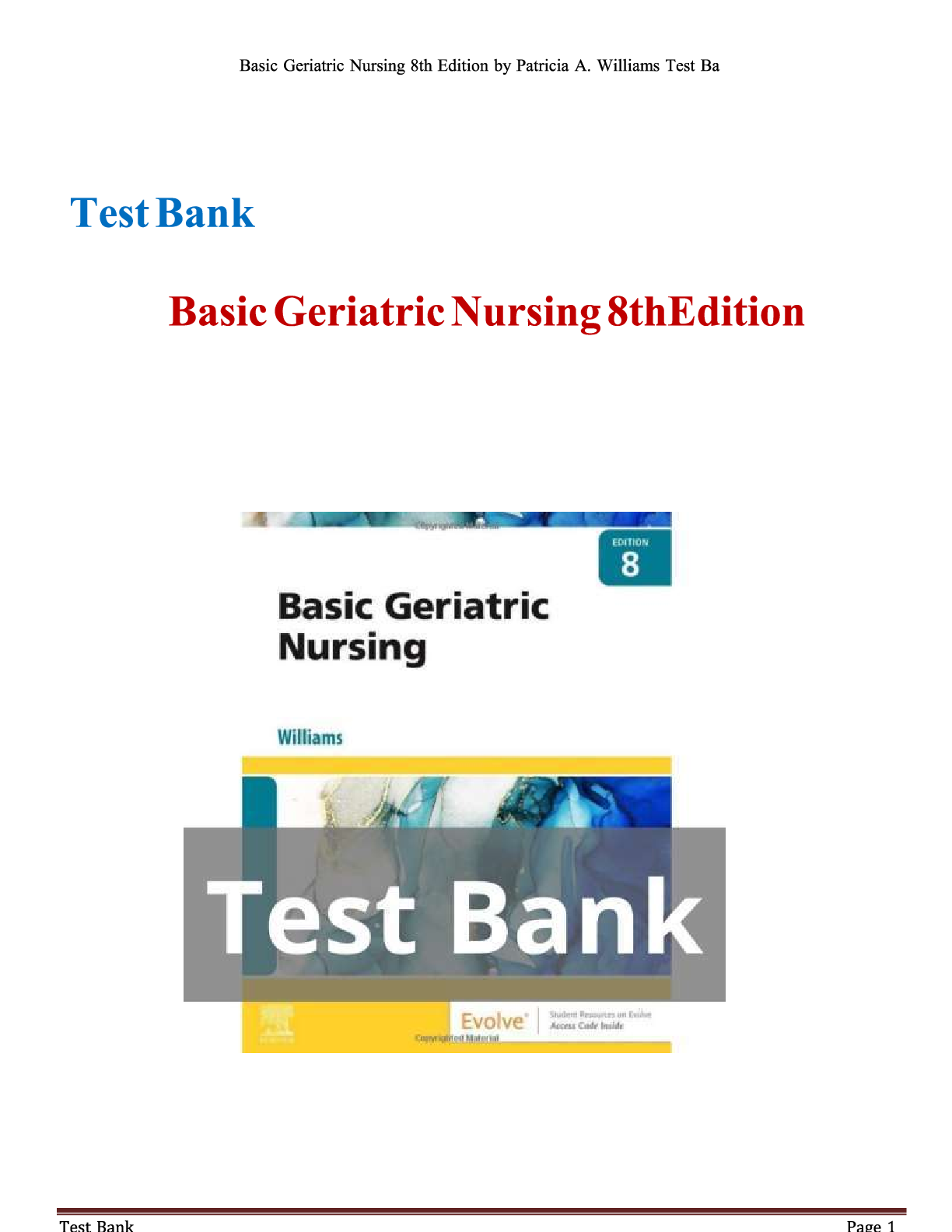

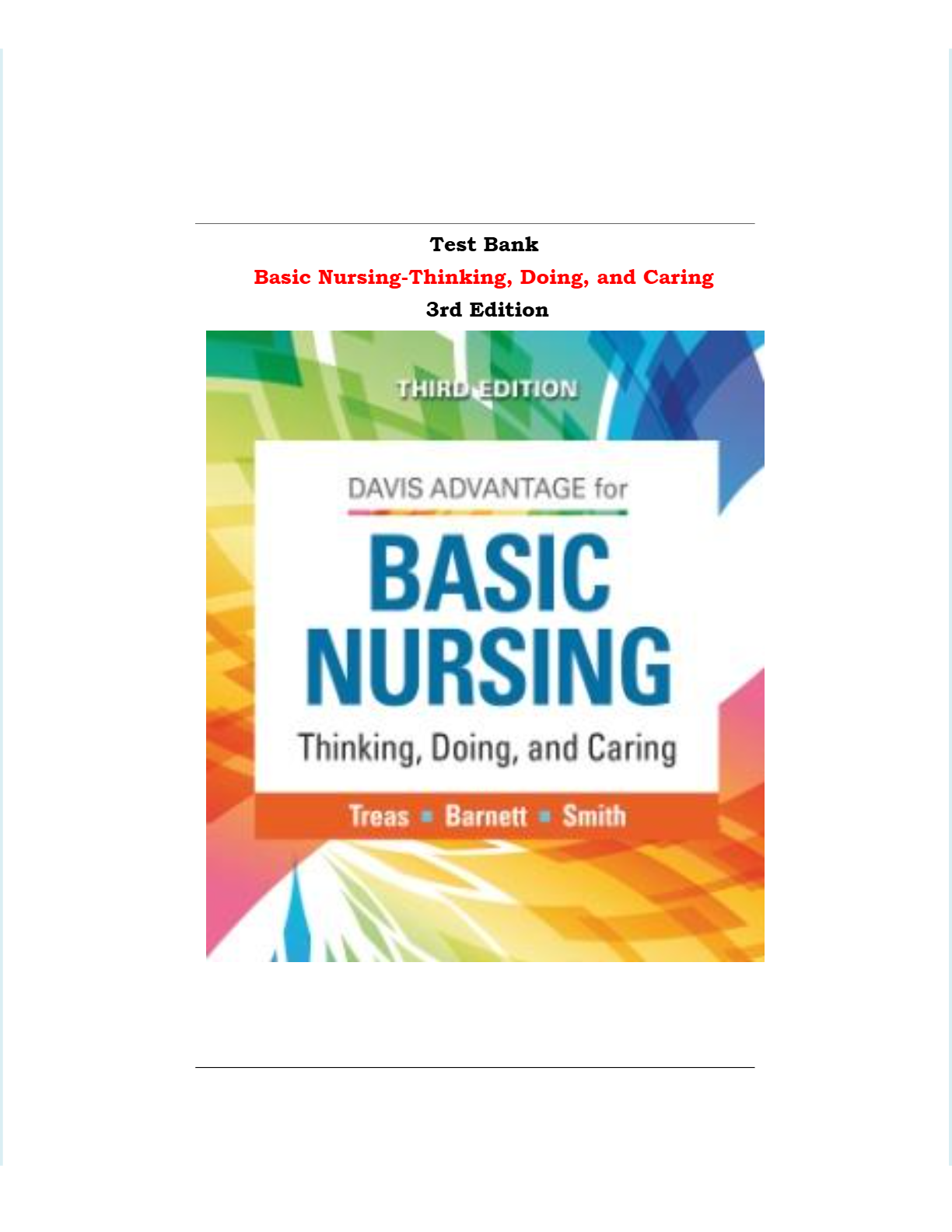


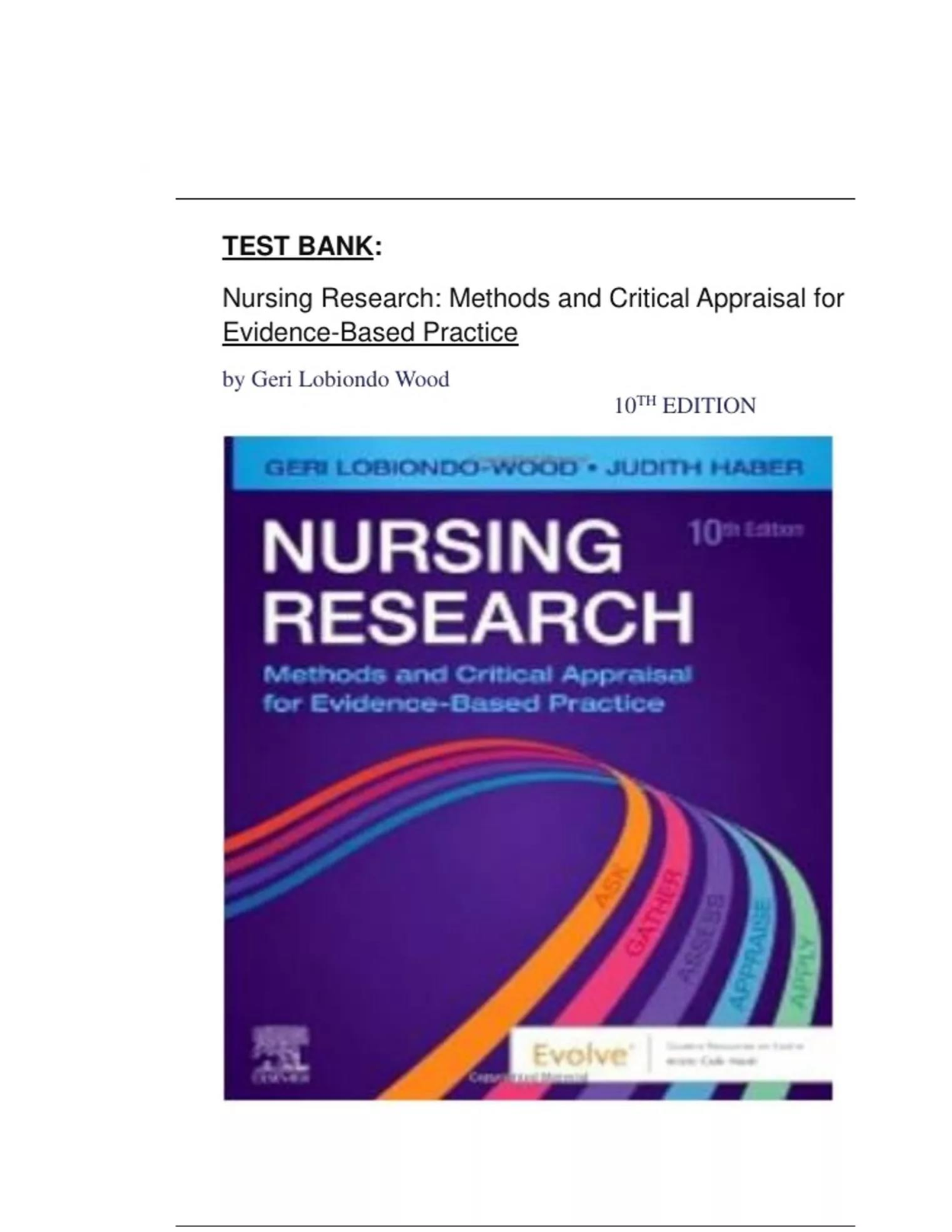
.png)

